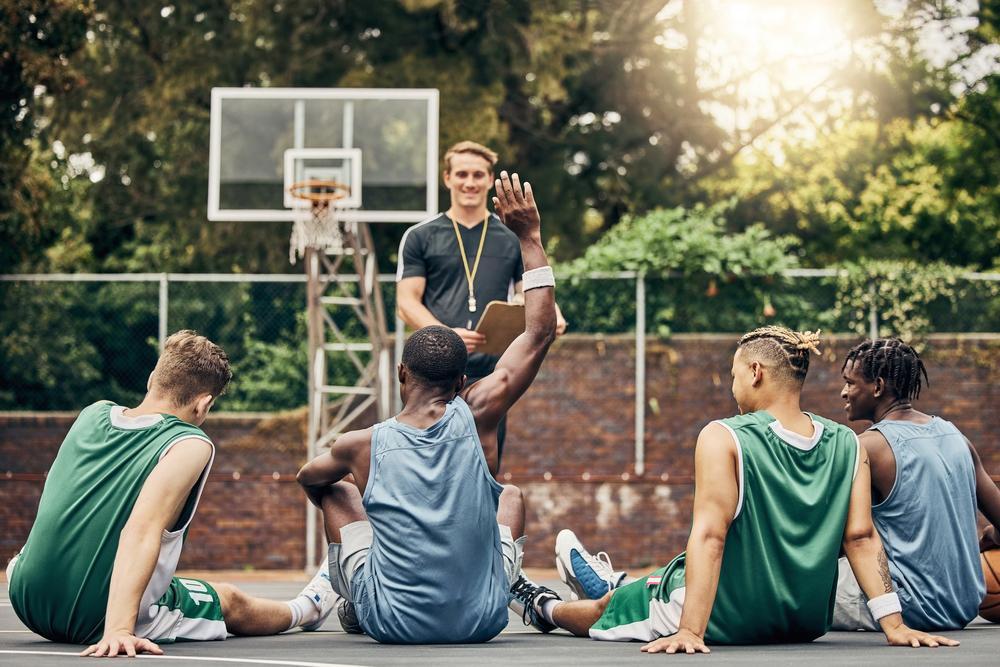 While it makes intuitive sense that effective goals for fourth graders differ from those made by juniors in high school, it’s important for parents and coaches to understand how to help youth athletes make and achieve appropriate goals.
While it makes intuitive sense that effective goals for fourth graders differ from those made by juniors in high school, it’s important for parents and coaches to understand how to help youth athletes make and achieve appropriate goals.
Dr. Roberta Kraus is a sports psychologist who works with athletes ranging from grade school to high school, and novices to Olympic athletes. As a TrueSport Expert, she provided her knowledge and guidance so we can all help make youth sports a positive experience for kids.
Where to Start
To help kids pursue the best goals, parents and coaches have to be on the same page in terms of the overall objective. According to Dr. Kraus, auditoriums of parents and coaches always know the “right” answer in terms of the reasons sports are beneficial for kids: character building, work ethic, integrity, teamwork, etc. But knowing the right answer doesn’t stop parents and coaches from applying too much pressure on kids to win, be a star player, and live up to the money spent on private trainers and traveling club teams. If we back up to a more fundamental goal, we can probably all agree we want to keep young athletes engaged in sport.
Staying engaged reinforces the values parents and coaches say they want from sports participation. Sports help engrain exercise and nutrition habits that lead to improved health outcomes throughout adulthood. The question is, how can we help kids set and achieve goals in a way that keeps them engaged in sports?
Goal Setting vs. Goal Getting
The amount of control, self-determination, and accountability athletes have changes dramatically as they progress from elementary school through high school. To be an effective goal, a young person needs to have sufficient control over the factors necessary to achieve it. This is why Dr. Kraus encourages kids, parents, and coaches to focus on “Goal Getting” instead of “Goal Setting.” Goal Getting is based on what a young athlete can achieve through effort. Goal Setting is based on win/loss types of outcomes. This isn’t an “everybody is a winner, we’re all special” idea. These are real and measurable goals a child can either achieve or fail to achieve, but the achievement or failure is based on the only thing they can really control: their effort.
Consider the following examples:
Goal Setting:
- Win more than half the games this season.
- Win the Championship
- Make the varsity team
Goal Getting:
- Get off the starting blocks faster (skill acquisition)
- Improve vertical leap by four inches this season (power development)
- Encourage a teammate at every practice and game (leadership)
Focus on Competitive Maturity, Not Age
Despite the title of this article, Dr. Kraus encourages parents and coaches to prioritize an athlete’s competitive/training maturity over chronological age. Consider, for example, two 12-year-old soccer players. One has been playing competitive club soccer for four years, the other just picked up the game this season. They are the same chronological age, but vastly different in terms of competitive maturity. From a goals perspective, the athlete with more experience can thrive with greater and different challenges compared to the more novice athlete.
Intrinsic vs Extrinsic Motivation
In addition to an athlete’s competitive or training maturity, Dr. Kraus encourages parents and coaches to consider the source of an athlete’s motivation when it comes to establishing appropriate goals. Athletes who are motivated by internal, personal achievement have high intrinsic motivation. Athletes motivated by external validation, like social status or prizes, have high extrinsic motivation. Both are important and valuable, but intrinsic motivation is a crucial component for long-term participation and achievement in sport.
If an athlete exhibits high intrinsic motivation early on by prioritizing personal achievement and what success feels like rather than what it looks like, then coaches and parents can help the athlete progress by encouraging the pursuit of extrinsic goals (winning). In contrast, if an athlete exhibits high extrinsic motivation early on by prioritizing winning and elevated status that results from success, then coaches and parents should help the athlete develop intrinsic motivation before reinforcing the athlete’s extrinsic motivation.
Use Language Deliberately
The words parents and coaches use can have a dramatic impact on a young athlete. According to Dr. Kraus, adults tend to be specific with criticism and nebulous with praise. Think about the car ride home after a game. Do you point out specific instances where your young athlete didn’t get to the ball fast enough, or a specific time your young athlete wasn’t in the right position on the field? Do you follow that up with nebulous praise for “being aggressive” or “working hard”?
The very specific criticisms paint mental pictures of what went wrong, but nebulous praise doesn’t enable kids to similarly visualize success. It’s important for coaches and parents to be as specific with praise as with criticism. Instead of “you were aggressive,” recall a specific example: “It was great to see you charge for that loose ball and get there first.”
It’s not that you shouldn’t point out areas that need improvement, but rather, that adults need to consider how quickly and specifically we can identify and describe failures, but how important it is to similarly identify and describe achievements.
Apply consequences and rewards
In her experience, Dr. Kraus says young athletes tend to impose harsher consequences on themselves for perceived failures compared to the consequences parents and coaches would normally deem reasonable. On the other end of the spectrum, neither young athletes nor their parents and coaches tend to praise effort or achievement to the same extent. In essence, as young athletes, parents, and coaches, we have a bias toward criticism and negative consequences.
To counter the bias toward criticism, coaches and parents should encourage young athletes to establish concrete consequences and rewards related to effort (not outcomes).
Ask the question: How do you help your team by giving your best effort? This is the basis for the athlete’s reward. If giving your best effort means you are hustling up and down the court the whole game, that’s what gets rewarded with ice cream or more screen time.
Ask the question: How do you hurt your team when you don’t give your best effort? This is the basis for the athlete’s consequence. If giving up early rather than chasing a loose ball, or chastising a teammate for committing a foul, is the example of you not giving your best effort, that’s what you pay a consequence for. That consequence could be not playing video games for a period of time, or waking up early on the weekend to do yard work.
The athlete, peers, and teammates should be the first judges of whether an athlete earned his or her reward or should suffer his or her consequence. Team captains should provide input next. And coaches and parents should be the last people to weigh in.
For Roberta Kraus, reducing the pressures to specialize and succeed are the most important and impactful things parents and coaches can do to support young athletes. When you foster a young athlete’s sources of motivation and help them value effort over outcome, you establish a pathway to personal achievements that don’t depend on a case full of trophies.
Roberta holds two master’s degrees, one in Higher Education from the University of Northern Colorado and one in Sports Psychology from University of Arizona. Her Ph.D. from the University of Denver is in Communications, specializing in its application to individual and team effectiveness. She played competitive tennis and basketball at Montclair State College earning her a spot as an alternate to the Women’s Olympic Basketball team.



